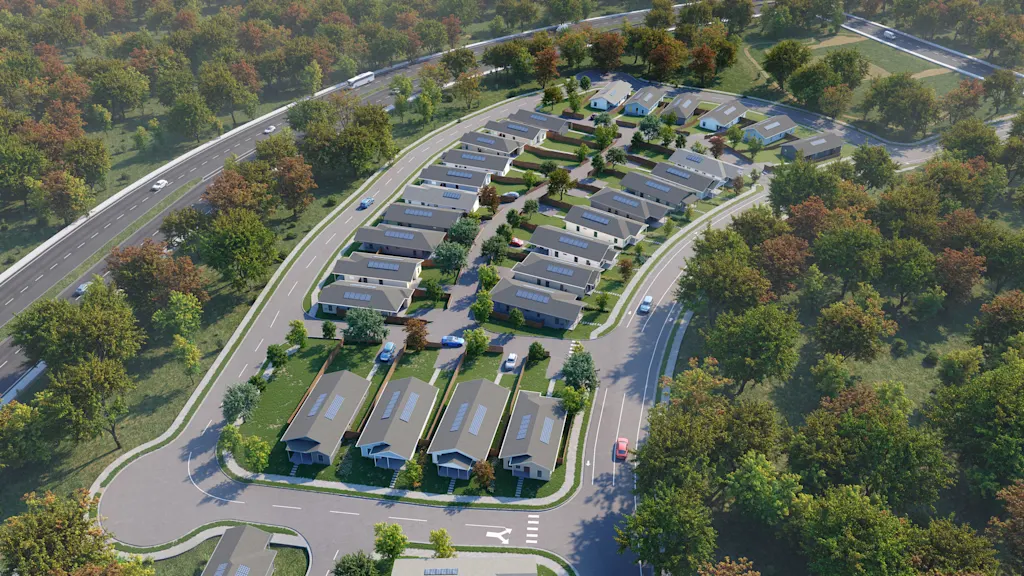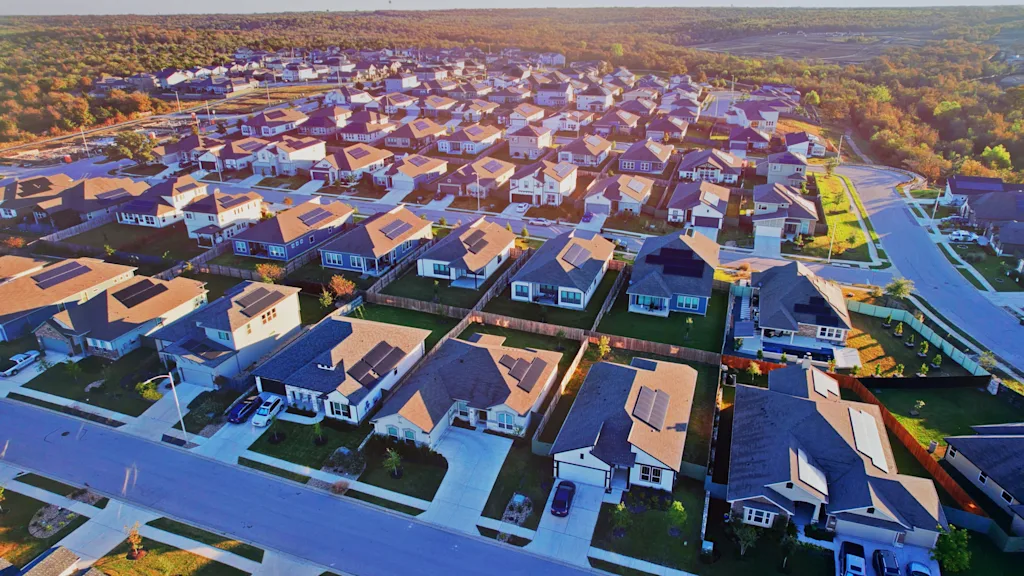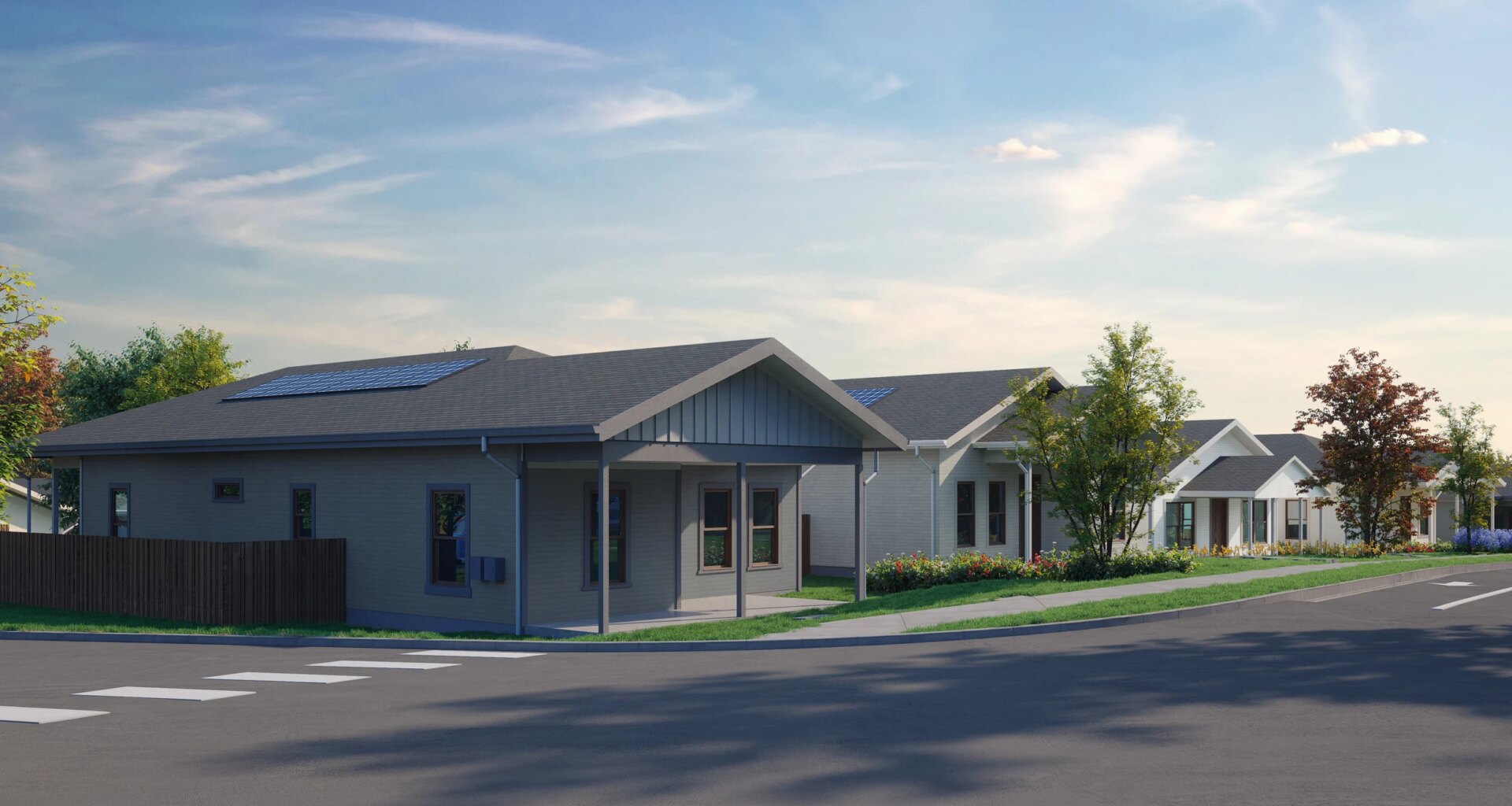A typical three-bedroom house in Austin, Texas, can sometimes rack up monthly utility bills of $200 or $300 in the summer. But in new homes under construction in a nearby suburb, residents will owe little beyond the basic utility connection fee.
The homes, built by Habitat for Humanity, tap into a shared geothermal system in a fully geothermal neighborhood. Heat pumps in each house connect to pipes that loop hundreds of feet underground, making use of the earth’s steady temperature for heating and cooling. The houses are also built to use as little energy as possible, with features like deep eaves that shade the interior and reduce the need for air-conditioning. Solar shingles on the roofs produce enough power to match each home’s expected electricity use.
“Our goal is to make sure that they have a very, very low energy bill at the end of the day,” says Billy Whipple, chief impact officer at Habitat for Humanity’s Austin office.
The nonprofit, known for working with volunteers to help lower the cost of construction, sees affordable housing holistically. It’s not enough just to have a low monthly mortgage payment; homes also need to be designed to have low maintenance and utility costs, especially as energy bills keep rising.
 [Rendering: courtesy Austin Habitat for Humanity]A 100% geothermal neighborhood
[Rendering: courtesy Austin Habitat for Humanity]A 100% geothermal neighborhood
The houses are part of Whisper Valley, a larger development that was designed to rely on geothermal energy. This type of geothermal technology, also known as a ground-source heat pump, isn’t new. Habitat for Humanity has used the tech itself in other developments. But it’s still fairly uncommon because of the cost. Depending on the house, some systems can cost as much as $45,000. Building a connected network for the neighborhood, rather than adding the technology home by home, helps make it more affordable.
EcoSmart Solution, a company that builds geothermal infrastructure, drills boreholes on each lot that connect to a larger energy system. “It allows us to implement the geothermal heating and cooling system at a fraction of the cost of doing it on a home-by-home basis,” says Chris Gray, EcoSmart’s CEO. “We bring it as a service. We do all of the drilling, all of the piping, all of the network connecting to each lot before the builders ever take over the lot.”
Taurus Investment Holdings, the original developer behind the property, had a vision of making sustainability mainstream. “They were looking at what we can do to really create sustainability, but in an accessible, affordable way that can be approachable for the mass market,” Gray says.
 [Photo: EcoSmart Solution]
[Photo: EcoSmart Solution]
The first homes began construction in 2017, and hundreds are now in place. Ultimately, the neighborhood is projected to have around 7,500 homes built by a variety of developers, along with businesses and around 700 acres of green space. Houses currently listed for sale range up to $465,000. Habitat for Humanity’s three-bedroom and four-bedroom homes, available for families earning 60% to 80% of the area median income, are much more affordable, at $230,000 to $245,000. (That’s also well below the average cost within the city of Austin, where the median sales price was around $575,000 last month.)
The nonprofit budgeted around $33,000 per house to add the solar and geothermal systems, according to Whipple.
Ultra-efficient homes
To minimize energy use, Habitat’s homes are well-insulated with an extra-tight building envelope. “When [homeowners] heat and cool, they won’t have to do it as frequently,” Whipple says. The houses also use passive design techniques, like deep overhangs on the windows that provide shade on sweltering Texas days.
Inside, the appliances are Energy Star certified. The homes also use LED lighting, smart thermostats, and heat pump water heaters. While it’s impossible to predict how much energy a particular family might use—if they like to crank up the AC especially high, for example—the size of the solar system installed on the roof was calculated to cover all typical usage.
That obviously makes a difference for residents on tight budgets. Skyler Korgel, one future resident who will be a first-time homeowner, says that she currently pays between $35 and $70 a month on energy bills in her apartment. “Having that jump to $200 to $300 per month, or unpredictably more during the summers, in a traditional home would be financially unsustainable for me,” Korgel says.
“Between the geothermal heating system, rooftop solar panels, smart energy management systems, high-efficiency appliances, and a tight building envelope, I am hopeful that I can reach energy usage of effectively zero, eliminate my energy bill for some months, and even be able to provide power when the electric grid is strained,” she says.
A model for future development
Habitat for Humanity is building 48 homes in the neighborhood, including 25 that will be constructed in October by volunteers in a five-day sprint. (Skilled construction workers are handling more complex tasks like connecting heat pumps to the geothermal system.) But it’s also considering using the solar-and-networked geothermal approach for future homes. That may include more houses at Whisper Valley.
EcoSmart is working with other developers to plan new projects across the country, from single-family homes to multifamily buildings. Others are also turning to geothermal. In Brooklyn, for example, a 463-unit apartment building that recently opened uses hundreds of geothermal wells for heating and cooling. An even larger all-geothermal apartment complex is opening in another part of Brooklyn.
In some cases, existing neighborhoods are also moving to geothermal. Near Boston, one neighborhood has been testing a shift from gas heat to geothermal heating and cooling over the last two years. In Ann Arbor, Michigan, the city is building a geothermal district system in a neighborhood where 75% of residents are low-income—both as part of the city’s work to reach climate goals and to help residents significantly cut energy bills.
The extended deadline for Fast Company’s Most Innovative Companies Awards is tonight, October 14, at 11:59 p.m. PT. Apply today.

